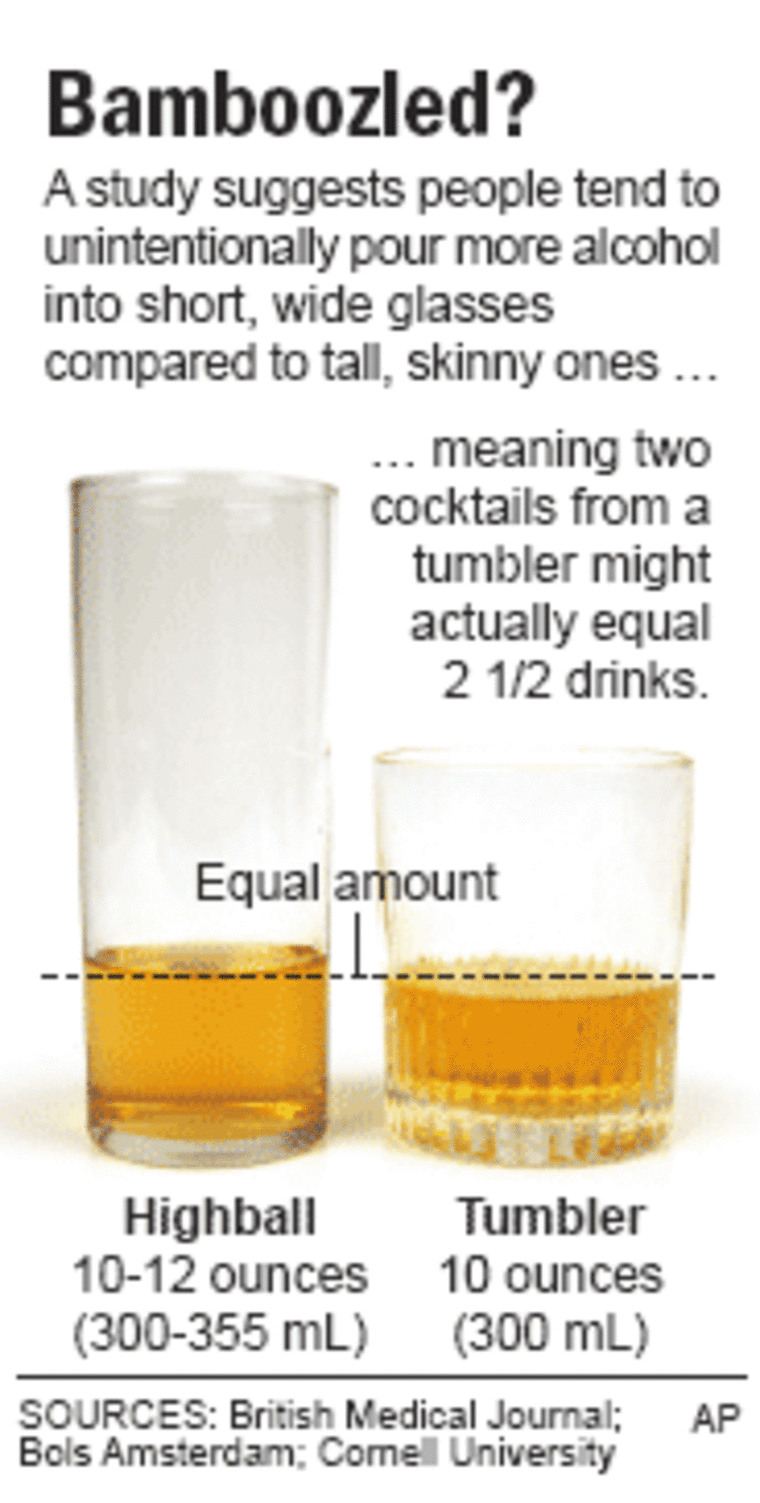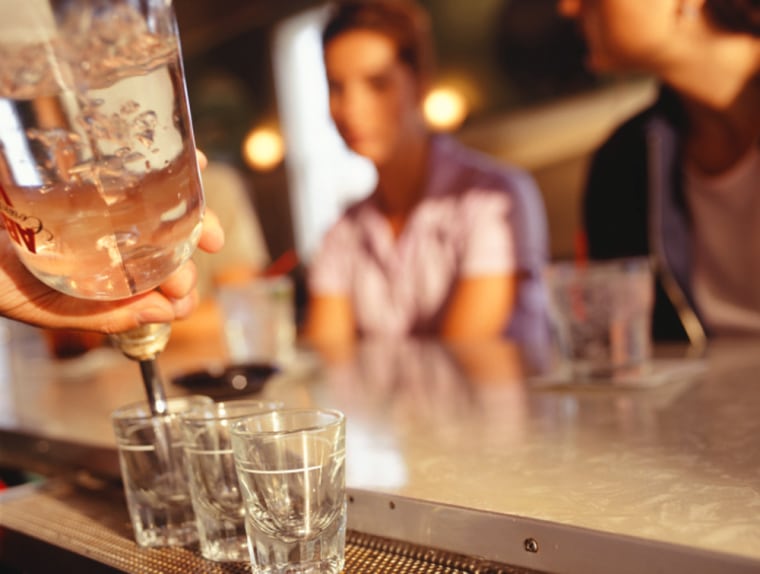Here’s a new tip to help curb drinking over the holidays: Ask for your scotch-and-soda in a highball glass.
That’s because people tend to unwittingly pour more alcohol into short, wide glasses compared to tall, skinny ones — meaning two cocktails from a squat tumbler might actually pack the punch of 2½ drinks.
The phenomenon is so pervasive even experienced bartenders do it, according to a study being published Friday in the BMJ, formerly the British Medical Journal.
“People say, ‘Oh, the bartender knows what he’s doing.’ Well, the bartender does know what he’s doing in a lot of cases, but he falls victim to these illusions,” said lead author Brian Wansink, a Cornell University marketing professor.
The so-called portion distortion illusion that causes people to misjudge volume based on container shapes is well established. But Wansink wanted to find out if training could correct the bias.

Researchers recruited 198 students at the University of Illinois at Urbana-Champaign to pour 1½-ounce shots from a bottle into one of two types of glasses: tall and slender or short and wide. Students poured 30 percent more into the stubby glasses than the tall glasses. Even a subgroup of students with 10 practice pours made the misjudgment.
Experienced bartenders did better, but not by much. Eighty-six Philadelphia bartenders asked to pour out shots on the job put 20 percent more into the short glasses. Bartenders asked to pay careful attention to their task were a bit more on target.
In cases where more booze was poured into taller glasses, the amount was negligible.
Wansink concludes that the pour-more-in-short-glass effect is only slightly reduced by practice, concentration or experience.
That extra splash of alcohol per glass can add up. Drinking a quarter more alcohol per drink could even skew calculations of bar patrons and partygoers trying to stick to one cocktail an hour.
Wansink suggests measuring out shots — or using tall glasses.
Baylor College of Medicine obesity researcher John Foreyt, who was not involved in the study, said he was surprised that even experienced bartenders fell prey to portion distortion. He said the study underscored the need for people to be careful not to underestimate their intake, be it alcohol or food.
Wansink said the effect also could skew epidemiological studies since alcohol consumption per glass could be underrepresented by a quarter. Not to mention the financial implications for bars and restaurants if bartenders are overgenerous, even unintentionally.
